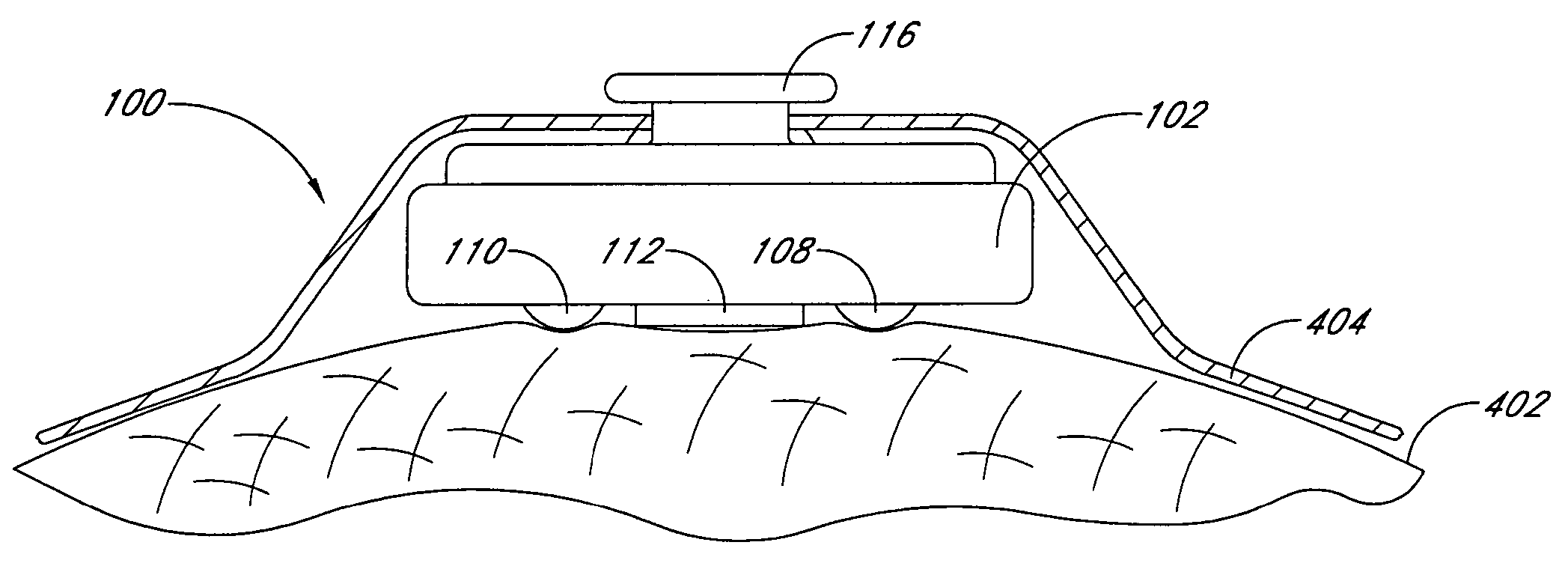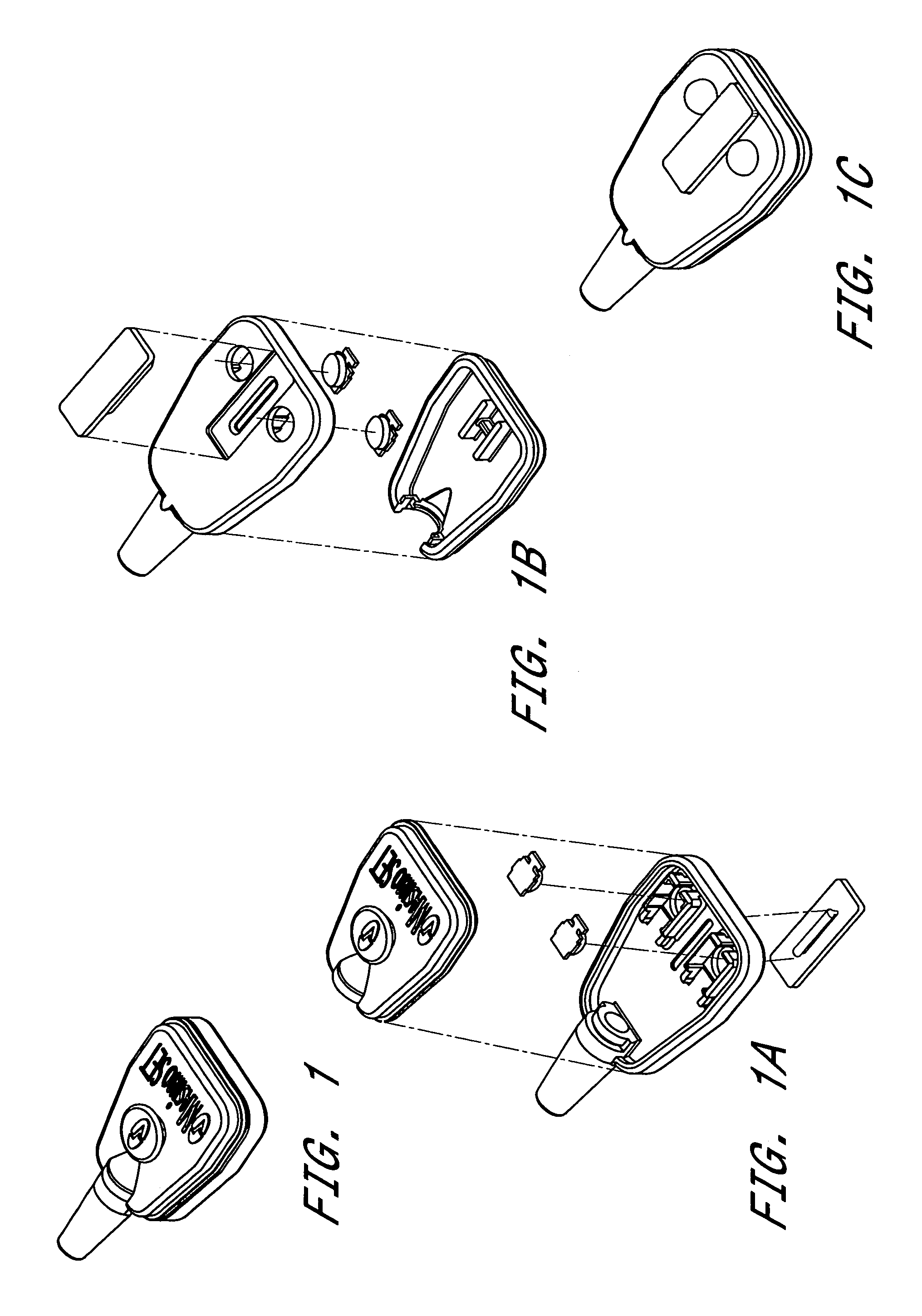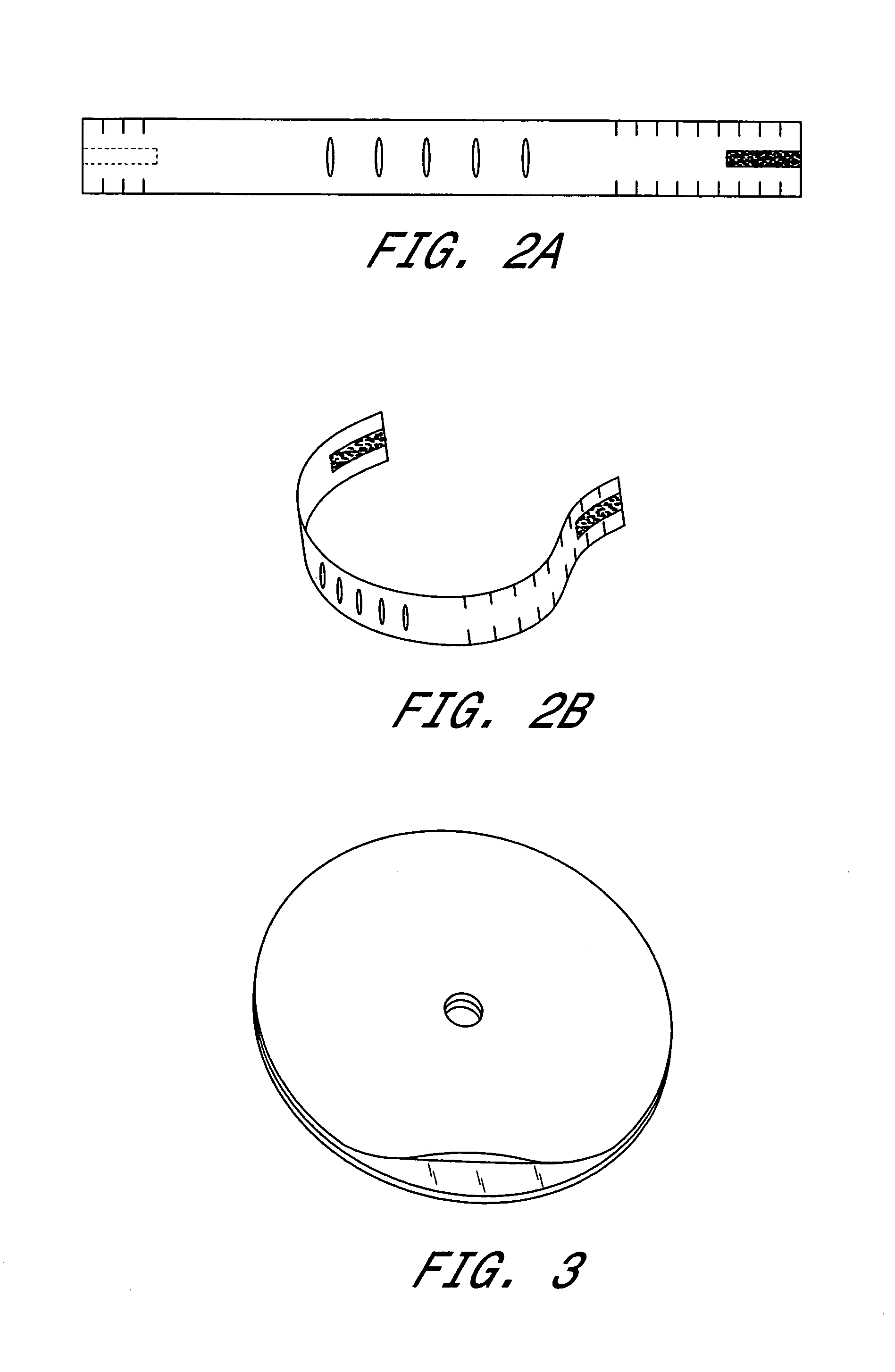Optical probe including predetermined emission wavelength based on patient type
a technology of optical probes and wavelengths, applied in the field of optical sensors, can solve the problems of affecting the accuracy of the measurement, and reducing so as to reduce the light energy reaching the detector
- Summary
- Abstract
- Description
- Claims
- Application Information
AI Technical Summary
Benefits of technology
Problems solved by technology
Method used
Image
Examples
Embodiment Construction
[0017]Aspects of the invention include a reflectance sensor including protruding lenses and a protruding optical barrier. According to one embodiment, one lens houses the one or more emitters and the other lens houses the detector. In addition, the reflectance sensor includes an attachment mechanism which provides sufficient pressure holding the sensor against a measurement site such that the protruding lenses and optical barrier noninvasively recess into the tissue of the measurement site. Thus, when the emitter emits light energy through a first lens recessed into the tissue, the light energy enters the tissue, is attenuated, and is received by the second lens recessed into the tissue and housing the detector. The recessed optical barrier advantageously reduces a potential that the light energy can reach the second lens and then the detector without first being attenuated by the tissue.
[0018]According to one embodiment, the attachment mechanism comprises a wrap such as a headband,...
PUM
 Login to View More
Login to View More Abstract
Description
Claims
Application Information
 Login to View More
Login to View More - R&D
- Intellectual Property
- Life Sciences
- Materials
- Tech Scout
- Unparalleled Data Quality
- Higher Quality Content
- 60% Fewer Hallucinations
Browse by: Latest US Patents, China's latest patents, Technical Efficacy Thesaurus, Application Domain, Technology Topic, Popular Technical Reports.
© 2025 PatSnap. All rights reserved.Legal|Privacy policy|Modern Slavery Act Transparency Statement|Sitemap|About US| Contact US: help@patsnap.com



